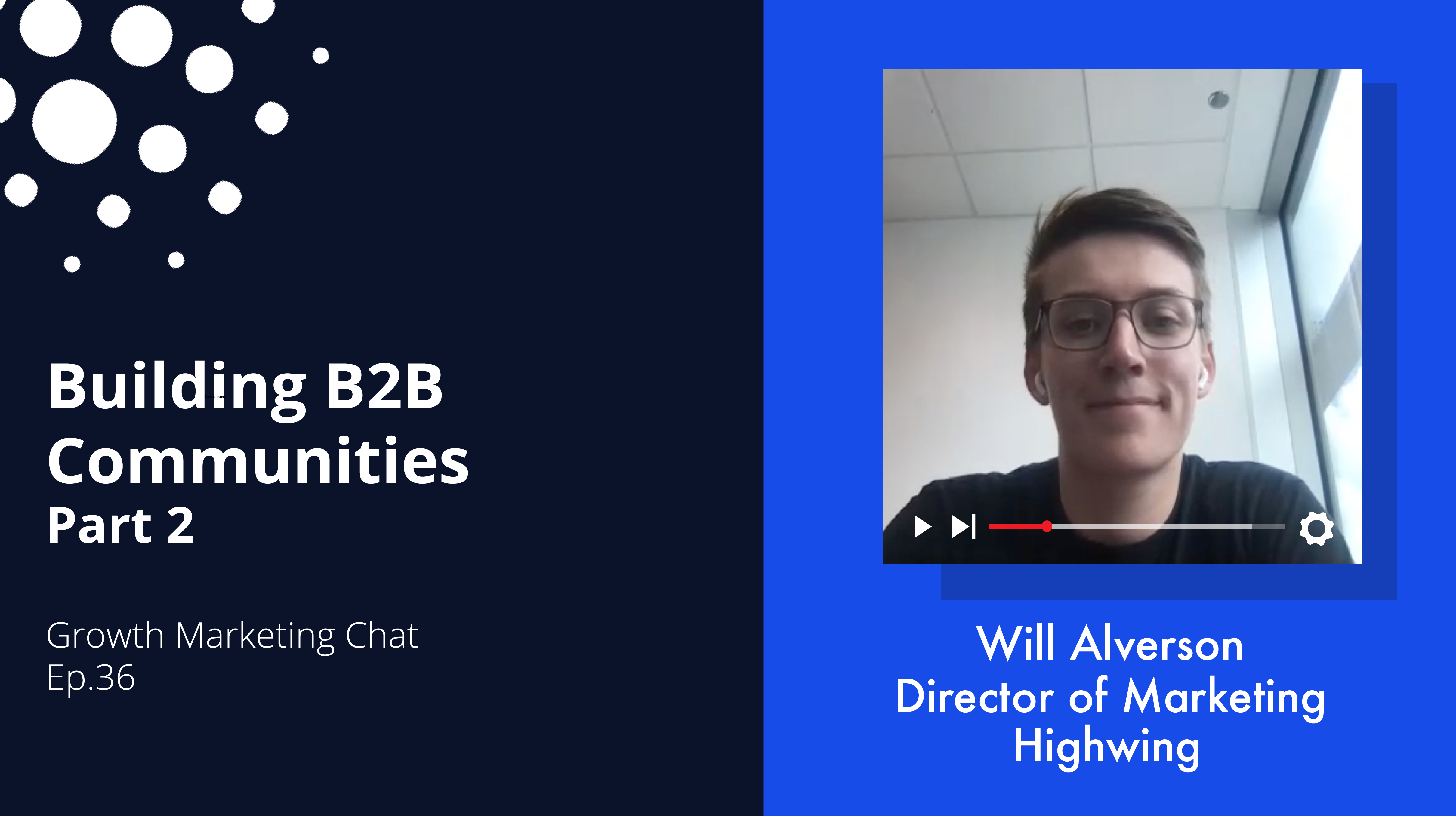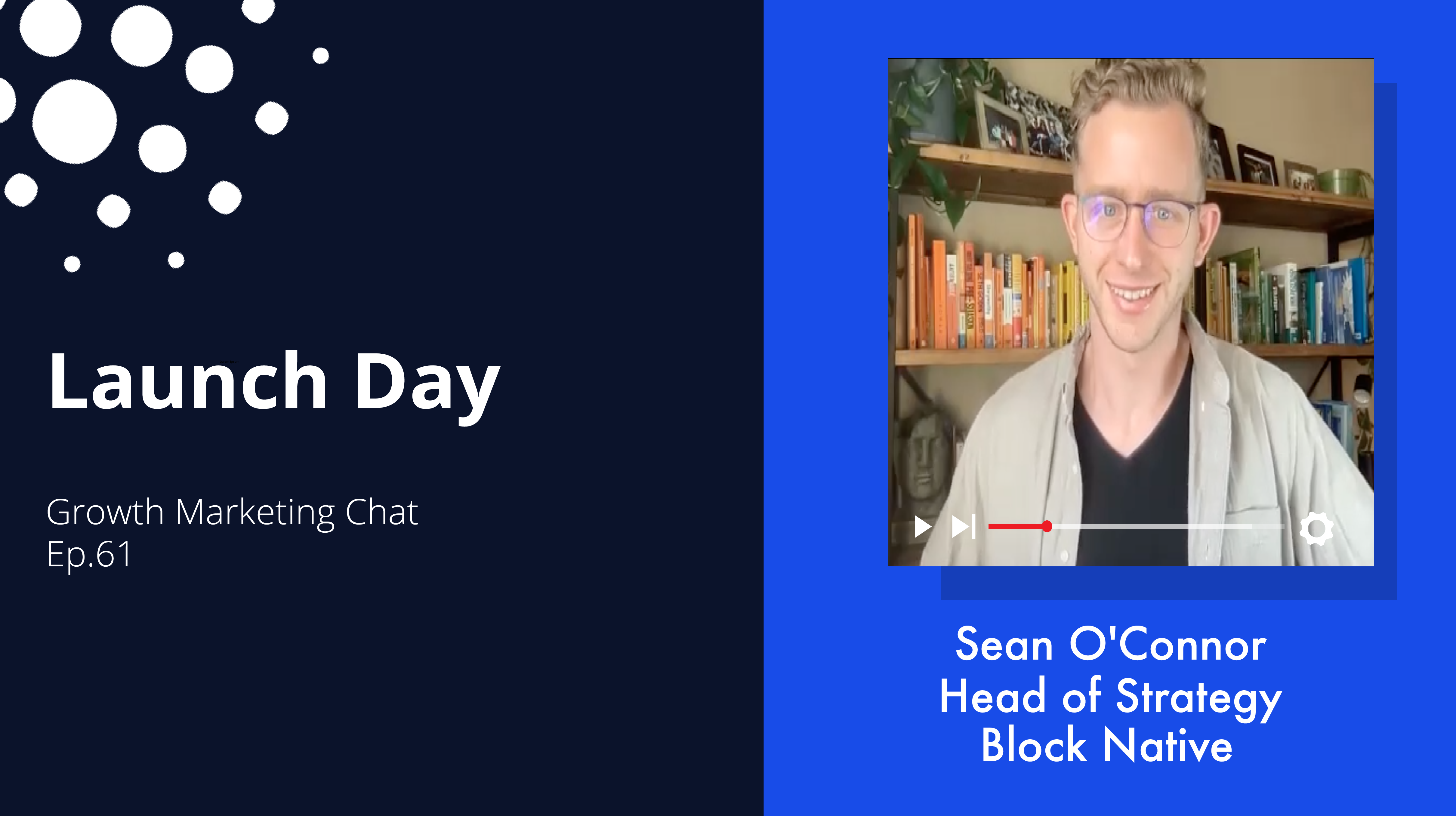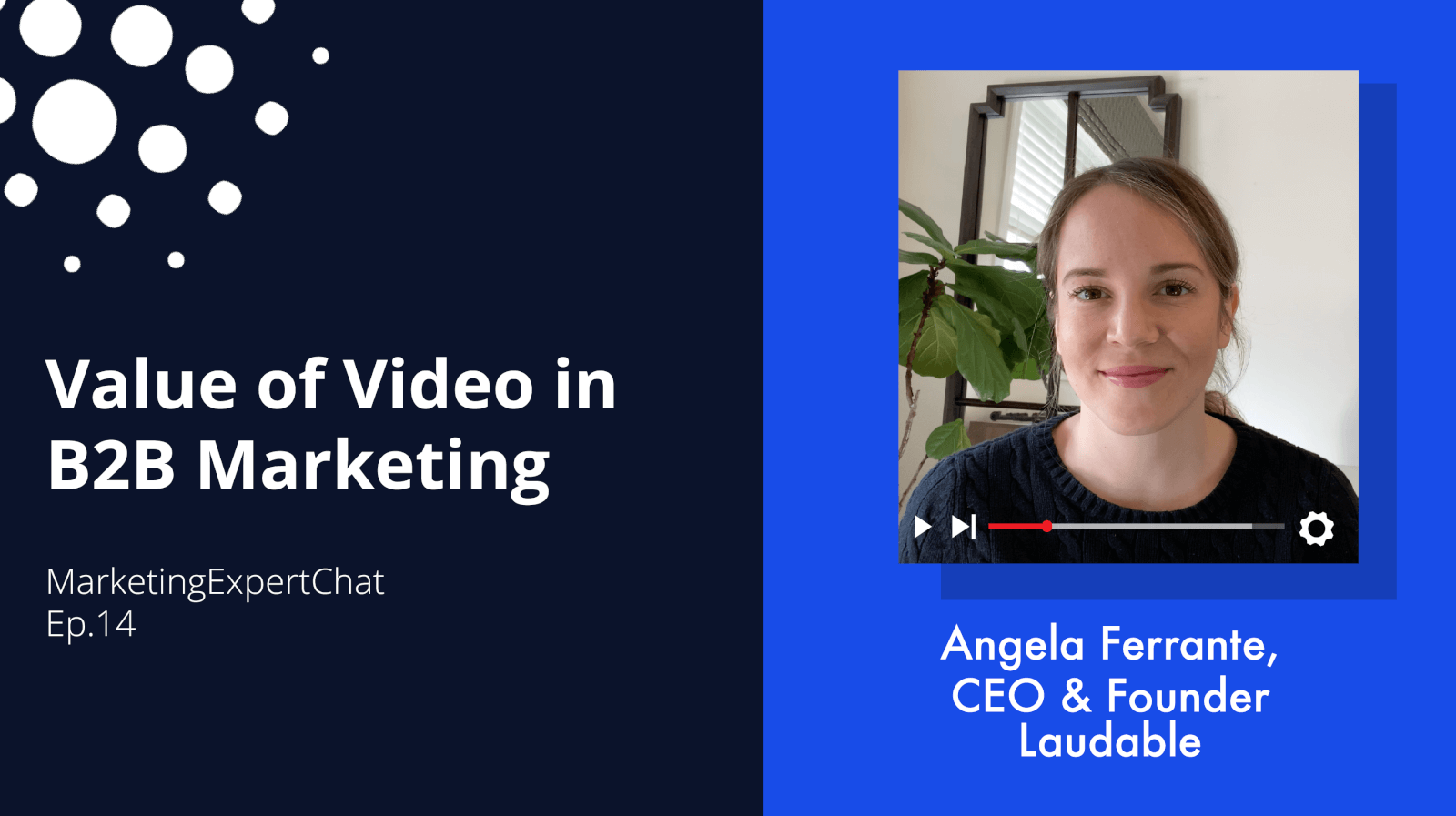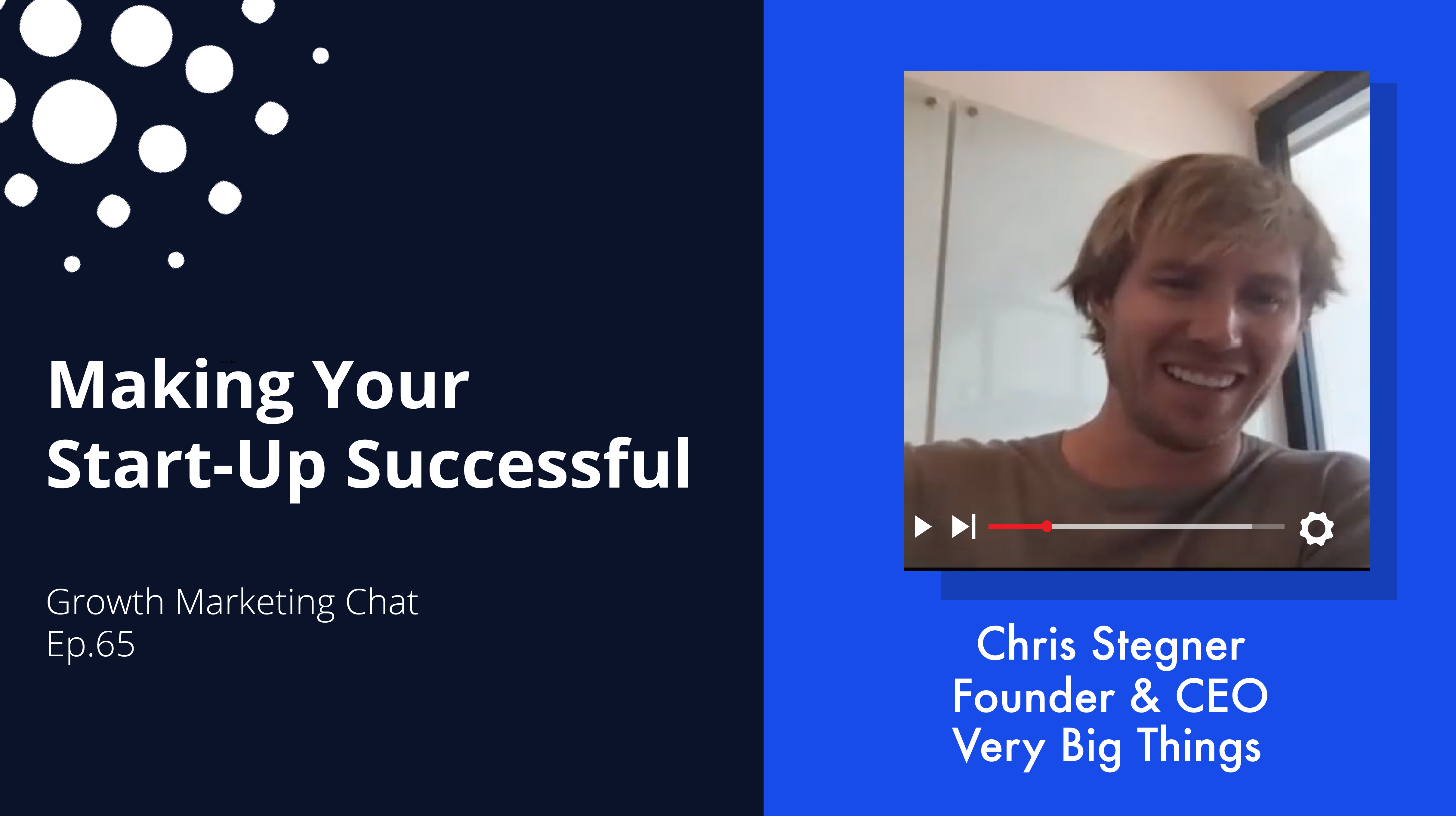In the B2B SaaS industry, launching a new, innovative product isn’t easy. The process can be intimidating...unless you have the right B2B product launch strategy in place!
All you need is a first-rate marketing strategy to ensure you’re messaging the best value propositions, reaching the right consumers, and building a credible brand identity. A SaaS marketing agency can help develop that strategy so that you can figure out the how, when, and where of your B2B marketing product launch.
Easier said than done, right?
“You don’t have to find the perfect magical model...”
David Adkin, Co-Founder & CEO of Adalo
B2B SaaS Product Launch Essentials
In this Growth Marketing Chat episode, David Adkin, Co-Founder & CEO of Adalo, draws from his own experiences to shed light on best practices you can follow when launching new SaaS products.
Hit play to find out how to:
- Contextualize your product and its role in the bigger picture
- Figure out what tasks should be done manually vs. with automation
- Put yourself in your customers’ shoes to understand their pain points
- Choose a launch strategy and medium that’s right for your company, your product, and your audience
- Research out-of-the-box growth opportunities, such as B2B affiliate marketing programs
Watch the full interview to make sure you’re equipped with the tools you need to make your B2B marketing product launch a success!
Video Transcript:
CAROLINE: Hi, welcome to Growth Marketing Chat. Today I’m here with David Adkin. David is the Co-Founder and CEO of Adalo. Adalo is a no code app platform for businesses and entrepreneurs to be able to develop applications, mobile applications and bring them to market faster and in a more affordable way. David, thank you so much for being with me today. I’m really excited to have you.
DAVID: Yeah, I’m really happy to be here as well. Thanks for having me.
CAROLINE: So, today we are going to talk about launching a new product especially a very innovative product like yours. When you launched, there are not really a lot of other, you know companies that were proposing a no code platform for developing mobile applications. And there was not really necessarily a market. People didn’t know that they could do that. So, my question for you is how did you go about your launch? I know that you did a soft launch. So, can you tell me a little bit more about that?
DAVID: Yeah, let’s see. So yeah, definitely the term no-code was not a thing back then, you know, when we were first talking about it, we were just saying like, without code, you know now it’s like its own category, now. It’s such a big change, those little words, but yeah. So, you know, when we first started people were definitely very skeptical. I remember, you know, we would chat with some people about it, they would say, oh, okay. You know, like that sounds awesome that, you know I don’t really know. And I even remember, you know I think it was a little bit, you know, kind of in between before we had our like public launch, but even some of our like first ads we started to run to see if people were interested, like people on were like commenting on them, like this is propaganda. And like, were like, you know, flagging them. And it was like, why it’s like, no, like I promise it’s not. So yeah, there’s definitely skeptical sides of things.
And we also knew that we were tackling a very large problem which meant it was going to be a long time to develop something that had enough, you know functionality to get there. Sometimes, you know, your MBP, you actually can build it you know, really small and really quickly. Sometimes there are MBPs that take longer, you know like if you think about it like we’re letting other people build. Right. So, our MBP had to be able to build up other people’s MBPs. Right. So, like it kind of had to be a little bit more advanced, but that you know, didn’t mean then that we didn’t want to launch it all, right.
So that’s when we kind of started thinking, okay we want to be open. We were up there, we were on, you know we could find this on the internet. We weren’t really like shouting it from the rooftops at that point. But part of our strategy was, and it was always a big focus. It’s just like how some of the best advice I can give is just like how can you get your first paying customer? Like what, what do you need to do to just get somebody who like will really be using your product? And that might mean doing a lot of manual things for them that, you know, in the end are not going to be the manual things that are automated out or features that you add that, you know get rid of those things.
But you know if you look at your entire product what can you do yourself? And for us that meant building out apps for people. So, I actually, you know, because I’m the one on the team founding team that, you know I couldn’t code, right. So, I would actually go to startup events, and I’d fly across, you know, the nation going to some startup events, looking for founders that, you know wanted that needed help building an app. Right. And I would say, well, I can do it. I can do it for you. And then I would even go into like local businesses around here or just kind of connect with people. And I would kind of always be thinking of like, oh what kind of app could they have that would really help? And then I would kind of pitch them on those things and then we would like build it for them.
Right. So now we’re, you know Adalo is a completely self-serve SaaS product. You know, we don’t do that at all anymore, but we were just always trying to figure out how can we get customers as fast as possible. And that was probably, you know some of the biggest strategy you had during our soft launch was after we would get those. And then, you know, we would start to build it out. We would, I would realize like, oh, like we don’t have this. Can you build that? And then we, you know, our dev, you know our dev co-founder who would build it.
And then, you know we started to sell our apps for more and more. Right. At the very beginning, we were not really confident as like, how much are people going to pay for this? And then, you know, be like hooking up about $500, right. For like an entire app, even though like an ad costs like seven $70,000 at the time. But like, we were just like, it doesn’t matter. Like you just have to get them to pay something. So that it’s real, right. That’s like a fraction of the cost of what it was. So, they were like, all right. But they were like, sure, let’s try this thing out. So, we would get more and more confident and, you know charge thousands of next one at 5,000, 10,000, you know it started to get to a point where we were charging a decent amount for them. So, we were showing true value there.
And we were also having to develop less and less like workarounds or features as it was going. So, we started to realize like, okay like we just sold that kind of expensive app, and we didn’t really have to develop any features for it. Right. Like I was like, oh, like you can do it. Right. So, it really did prove what was necessary when we just truly built out whatever the workflow was.
CAROLINE: Yeah. So, it’s amazing. So, by doing this you kind of really felt your customers’ pain. And it’s really important because a lot of the time if you can’t use your own product, you don’t know what the customer is going through at all. And then you find your product market fit while getting paid for doing it. So, it’s kind of a magical model that you have here. It sounds pretty good.
DAVID: Yeah. And definitely like, you know, we weren’t, you know we were really breaking even. Like it wasn’t like, you know, we were like, wow this is like a super successful business. That was like, you know, going to kind of take off making that it was, you know still would take you some time to make some of those things. And, you know, we were trying to build out the platform too. So, you don’t have to find, like I would say like the perfect magical model of, well obviously if you can find like one that’s totally profitable and scales right away. Fantastic for you.
But like, I also, you know, don’t I don’t necessarily want to take away, you know, for you know, your work differently for everyone but it doesn’t have to be like you’re like super profitable. It’s just like, just the act of like either just getting paid something so that’s a real, you know, that, that customer that you’re working with, you know, really, it’s like, no I do value you, you know, it was like, again like the first couple of ones we charged if the average app costs 70,000 and we’re like, hey we’ll do a few for 500 bucks. Like, you know, like that that’s, that’s not like a true market value, but it was always just something. Right. So that they had a little skin in the game that they were proving that this really was, you know, kind of a valuable thing. So yeah, that was super kind of instrumental.
And to your point, like you learn things about your product and like around your product that are not even like part of what your features maybe are but are things that are related to it when you’re starting to do that. So, for example, right. Like we, you know, you still have to after you make your apps on Adalo, you know you have to submit them to, you know, Apple and Google and you know, they go into the stores, and you own the apps. So obviously you have to submit them yourselves like that’s part of Apple and Google’s policies. And like, so like that’s not, that’s like not part of our product, but like we started to empathize and like understand like how difficult that was what are the tricky things that maybe you run into there when you are submitting it, you know helping them figure out, you know how to find their for customers or run betas with their things then started like, that’s again, not part of our product, but now part of like our tutorial strategy and our like education strategy, because, you know we know that those things, you know that you’ll need help with them or that, you know the more help you get, the more successful you’ll be. So yeah. You definitely learn things that are even like not part of your kind of true product, a core sense as well.
CAROLINE: Right. Right. And you just gain a deeper understanding of your market.
DAVID: Yeah. Yeah exactly. Yep.
CAROLINE: That’s great. And so, would you have any advice for other entrepreneurs in the queue that want to have kind of a softer launch instead of, you know developing a product for two years and then launching? What would you recommend?
DAVID: Yeah, so like I was saying, step one is definitely like, thinking about your entire product and then saying, you know, you always have these amazing ideas for all these different parts. Right. And saying to yourself, okay what eventually will be automated right. Or easy to do on your own. Right.
So, for example, like we had to compile all of the code to actually get it to the Apple and Google play. Right. Totally manually. Or like, you know we wanted them to be building it eventually, but like we built it for them. So, figure out what of your product eventually will be awesome when it’s totally built out. But what parts could you do manually? Because again, like, we didn’t have that many, you know like today we can we have over 200,000 makers, you know, over the world. I can’t be building all the fast like when there was just 10 of them, it was like, oh, okay. Like, you know, you can actually, you know, you know build with them.
So certainly, I would say, figure out what you can do manual instead of it being automated and, and some things you can’t, right. Because it’s like, well it had to have at least something that would make it for me. Right. So, then they get that out and then go find some go out to where your customers are. Find some people that are actually willing to pay start getting some, you know, real use cases there. And then there definitely will become a time when it is a tricky decision. Right. But you’ll know it’s the right decision, once you’ve done a few of those and it starts to become more and more smooth, right. Where when you talk to them, we don’t need any more features or you’re able to build it faster and faster but there will come a point where you have to unfortunately stop that side of like the manual kind of service side of things. And then it’s hard because like, you’re like, well we’re helping people and we’re kind of look, we’re good. We got some customers and some money, and this feels great but kind of have to stop and say, okay, what are now the things that need to be automated or changed?
Right. So, in our case, and we had a really deep, like empathy and understanding of like, what was difficult to use. Cause like I was using the product every day for hours and hours. Like I really knew like, okay we should change this to make this easier. We should change this to make this easier so that other people could do it. So, then we kind of went into this mode of, okay now we’re going to have this kind of few months period where we’re just making it easier and we’re not going to take on any more customers. And again, that was, that was difficult because obviously you want to showing growth, but you pause for a second. You, we made it easier.
And then when we launched publicly why it was also great is because we had real customers before we even really launched. Right. So, then we had amazing case studies that, you know we’re up there right away. People could see them. It, it, it was like, whoa, this is like this is like a real thing. It was like, no, it is real. Like we have like people that have gotten true value out of it. So, I think having the social proof right away when you launch is, is amazing. And we did that still in a soft open way. Right. Other people could try another approach and that could work. But certainly, what worked for us was like we were public that whole time. Like you could come at the time, you could come to a Adalo.com and you know, you could play around with it. And we weren’t trying to like spend tons of money to get people there or really like, you know, market it, but you could come.
Other people have tried, you know going in beta and like silent types of approaches. And again, there are pros and cons to that, but for us you know, being able to have people jump in there and see that like watch them, you know, we have, you know there are some great programs, especially for, you know SaaS companies out there like, like full story or you can kind of watch and see what people are doing which is really helpful for tracking down where those issues are. And yeah. So, I guess kind of to recap there, find some way to get someone’s at least pay you to really go through it. Or if you have to do it for free immediately, you know kind of do it for free, but find some way to do that keep doing that enough times until you like find the patterns. And you’re like, okay, like, you know, I get it again. You need this one thing. Or like what, like what until you you’ve, you it becomes so obvious and then figure out how to translate that into now you create all the things that how the feedback that you just got from all those real customers. And then you can launch with great with great case studies.
CAROLINE: Yeah. And you know, sometimes people underestimate this but having a case study when you launch, especially if you want to do any kind of press, nobody’s going to pick up on a launch without an example of a real life use. So, you kind of, if you want to make noise around your launch you do have to have a soft launch and a prelaunch.
DAVID: Yep. Yeah, exactly. And you know, for sure you could do that from a beta sense, you know, where people didn’t try to build it up and be like, here’s our beta and get a bunch of people to, to join as well. And that’s another strategy for, for us. We can kind of took the other approach where it always there, you know, instead we just weren’t really trying to shout it from rooftops until we felt like we were, we were ready. So, kind of like two different approaches there. Certainly, has its pros and cons but the soft kind of launch really worked well for us. So, yeah.
CAROLINE: Alright. Well, David, thank you so much, really appreciate it.
DAVID: Yeah, this has been fantastic. Thank you so much for letting us kind of tell our story any way that we can help out, you know founders. We have tons of founders on our platform as well. So, any little nuggets of maybe wisdom that I can share from our crazy ride to help anybody out, you know wish you all the best on your journeys, fun, fun thing bringing something to life, so.
CAROLINE: Definitely is. Alright, thanks, David.





